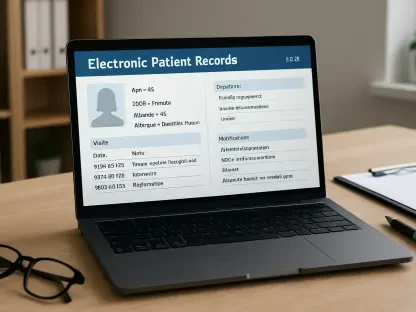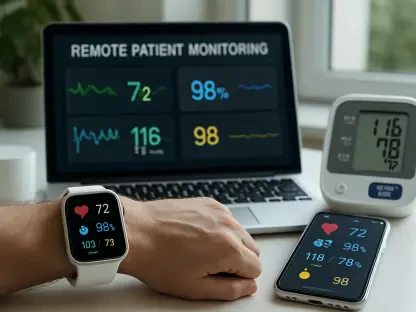In today’s fast-paced corporate environment, where remote and hybrid work models have become the norm, ensuring employee wellness has emerged as a critical challenge for organizations striving to maintain productivity and morale. Imagine a scenario where an employee, juggling tight deadlines and family responsibilities, suddenly falls ill but dreads the hours lost to commuting and waiting at a doctor’s office. Telehealth steps in as a game-changer, offering immediate access to medical care through a simple video call, directly from the comfort of home. This innovation not only saves time but also reduces stress, allowing workers to prioritize health without sacrificing work commitments. As workplaces evolve to meet the demands of a digital era, telehealth has become a cornerstone in addressing the growing need for accessible healthcare, fostering a culture where well-being is seamlessly integrated into daily operations. This transformation signals a broader shift toward employee-centric policies that benefit both individuals and employers.
Revolutionizing Access to Healthcare
Bridging the Gap in Medical Services
The advent of telehealth has fundamentally altered how employees access medical care, eliminating many of the barriers associated with traditional healthcare systems. For countless workers, particularly those in remote or hybrid setups, scheduling a doctor’s visit once meant taking significant time away from work, navigating traffic, and enduring long waits in crowded clinics. Now, with telehealth platforms, a consultation with a healthcare provider is just a click away, conducted via secure video calls at a time that suits the individual. This immediacy ensures that minor health issues are addressed promptly, preventing them from escalating into more serious conditions that could disrupt productivity. Beyond convenience, this accessibility empowers employees to take charge of their health without the logistical burdens that often deter timely care, aligning perfectly with the flexible nature of modern work environments.
Enhancing Work-Life Balance Through Convenience
Beyond simply providing access, telehealth plays a pivotal role in supporting work-life balance by minimizing disruptions to daily routines. Employees no longer need to choose between addressing a health concern and meeting a critical deadline, as virtual consultations can often be scheduled during breaks or outside traditional office hours. This flexibility is particularly valuable for parents or caregivers who must juggle multiple responsibilities, ensuring they can seek medical advice without sacrificing family time or work obligations. Additionally, the reduction in travel and waiting times translates to less stress and more energy for both personal and professional pursuits. By integrating healthcare into the flow of everyday life, telehealth fosters an environment where employees feel supported in maintaining their well-being, ultimately contributing to higher job satisfaction and sustained engagement with their roles.
Strengthening Workplace Culture and Efficiency
Fostering a Wellness-First Mindset
Telehealth integration into workplace benefits signals a profound cultural shift, where organizations prioritize employee wellness as a core value rather than a secondary perk. When companies offer easy access to virtual healthcare, they send a clear message that health matters just as much as productivity, which can significantly boost morale and loyalty among staff. This approach transforms wellness from a buzzword into a tangible priority, encouraging workers to seek care without fear of judgment or repercussions. As a result, employees are more likely to remain with an employer who visibly invests in their well-being, while prospective talent is drawn to such forward-thinking environments. This cultural evolution not only enhances retention but also positions companies as leaders in a competitive job market, where employee expectations for supportive policies continue to rise.
Streamlining Operations for Employers
From an operational standpoint, telehealth offers substantial advantages to employers and HR teams by simplifying the management of employee health-related absences. Digital platforms provide verifiable documentation, such as electronic doctor’s notes, which help justify sick leave and reduce the potential for fraudulent claims. This transparency builds trust between staff and management, ensuring fairness in how absences are handled while minimizing legal risks through accurate records. Furthermore, by enabling quicker recovery through timely medical access, telehealth helps maintain workforce productivity, reducing the ripple effects of prolonged absences on team dynamics and project timelines. Employers benefit from a healthier, more engaged team, while HR departments appreciate the efficiency of streamlined processes, making telehealth an indispensable tool in balancing employee needs with organizational goals.
Reflecting on Telehealth’s Lasting Impact
Building Trust Through Transparent Systems
Looking back, the implementation of telehealth in workplaces marked a significant turning point in how trust was cultivated between employees and employers. The availability of clear, digital records for medical consultations and leave documentation addressed past concerns about accountability, ensuring that both parties operated within a framework of mutual respect. This transparency helped eliminate misunderstandings that often arose from unclear or unverifiable health claims, fostering a more harmonious workplace dynamic. As companies adopted these systems, they noticed a decline in disputes over leave policies, which in turn strengthened the bond between staff and management. The lasting effect was a workplace environment where honesty and fairness became the foundation of health-related interactions, proving that technology could enhance human connections.
Paving the Way for Future Innovations
Reflecting on the journey, telehealth’s integration into employee wellness programs laid crucial groundwork for future advancements in workplace health strategies. Its success demonstrated that digital solutions could effectively address immediate needs while setting a precedent for broader innovations in employee support systems. Moving forward, organizations can build on this foundation by exploring AI-driven health assessments or wearable tech for real-time wellness monitoring. Additionally, expanding telehealth to include mental health resources could address growing demands for holistic care. Employers should consider partnering with telehealth providers to customize offerings that align with workforce needs, ensuring scalability as digital transformation deepens. By continuing to prioritize accessible, tech-driven solutions, companies can sustain a culture of wellness that adapts to evolving challenges, securing long-term benefits for all stakeholders.









